A catch can is a great way to filter excess oil vapor and other contaminants from your oil and prevent them from entering your intake system, it can improve engine performance and help keep your engine’s valves clean and free from deposits. However, among the enthusiast community I have seen these installed improperly, and this can lead to poor performance or other problems. I’ve spent significant time, research, and experimenting with different catch can setups to determine what performs best for a naturally aspirated or forced induction engine.
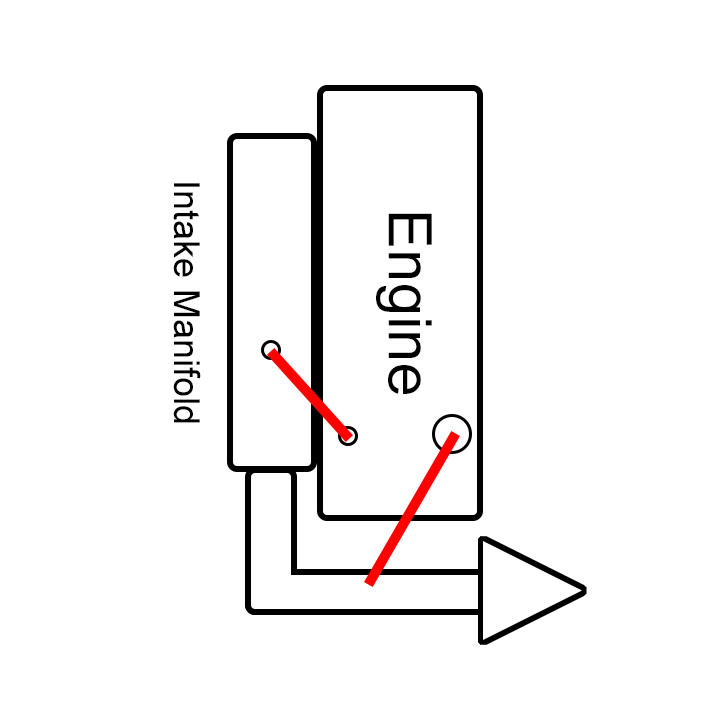
First let’s look at what your factory or OEM setup might look like. You probably have one or more PCV valves on your valve cover and one or more ports on your block. When your intake manifold is in vacuum (throttle closed or partially closed) the valve opens, evacuating the crankcase of vapors. The PCV valve is also metered, meaning it’s designed to only allow a certain amount of air to flow through it. An unmetered valve, like a check valve, could cause a high idle or excessive crankcase vacuum.
High idle is wasting fuel and adding unnecessary NVH and can cause overheating when stopped. Excessive crankcase vacuum is also bad, remember that your engine has rubber seals that are designed to keep oil from leaking out, not from air leaking in. If your setup is causing high crankcase vacuum, you can actually force air to come in around the seals, possibly causing them to fail and start leaking oil later on. The PCV valve helps regulate the pressure between the intake manifold and the crankcase to keep things in check.
You should also have a connection between your valve cover and intake pipe, either leading up to your throttle body or up to your turbo/supercharger. This serves two functions, one is to serve as a source of filtered air into the engine ( this is why it’s called a breather) and to also serve as a vent for excess crankcase vapors when the PCV valve is closed, such as under boost or full-throttle acceleration.
This is fine for stock engines or engines with slight modification, but it’s less than ideal for performance or boosted engines. Excess oil vapor is allowed into the intake manifold and combustion chamber to be burned, which is problematic because oil has a much lower octane rating than even Regular gasoline and the PCV valve can leak under boost, further pressurizing the crankcase with boost pressure.
Next let’s look at a simple catch can setup:
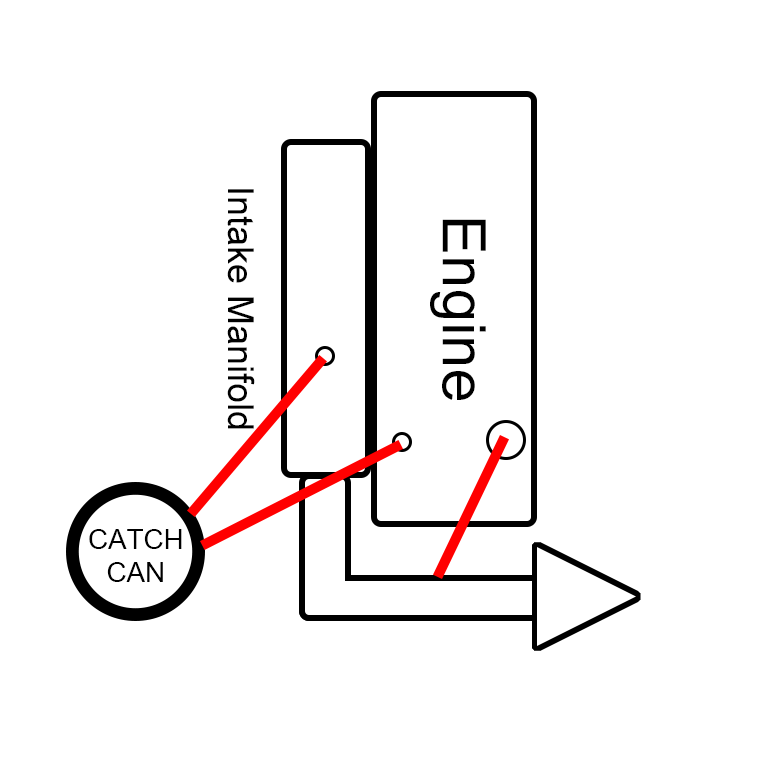
In this basic catch can setup, the catch can sits between the PCV valve(s) and the intake manifold port. This captures the oil vapor that normally would pass directly into the intake manifold under vacuum, helping to keep your valves clean. However, the breather port is still connected directly to the intake, and some oil vapor may still pass through into the manifold.
Let’s look at another setup:
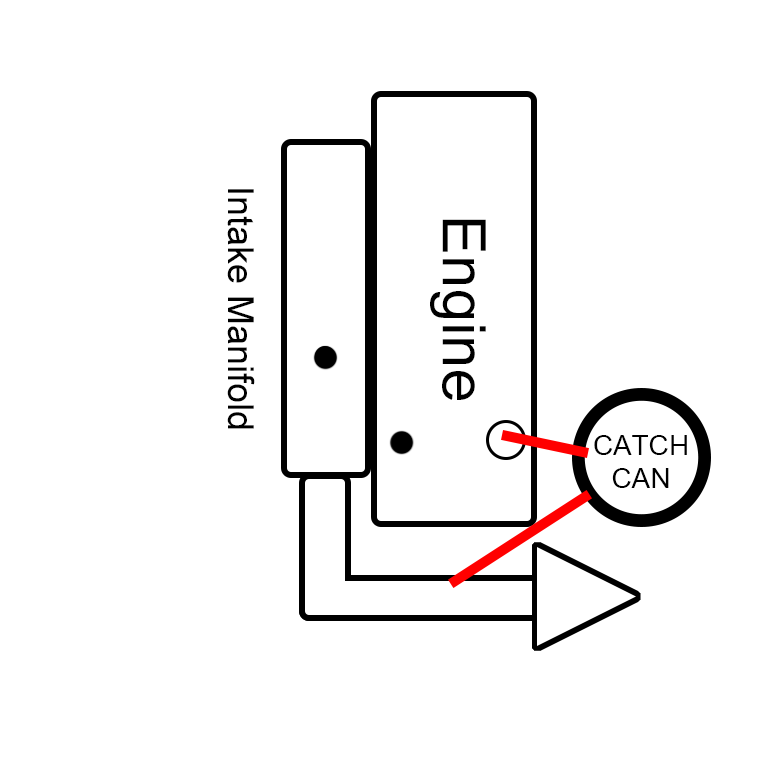
In this setup, the intake manifold port is blocked off or capped and the PCV and breather ports are connected to a catch can, then connected to the intake tube. This is pretty simple and will capture some vapor gases, but there isn’t sufficient pressure differential between the crankcase and the intake tube to evacuate the crankcase. The result of this can be a buildup of pressure inside the engine, causing oil to leak past the crank and cam seals and possibly cause oil to back up in the turbo and seep past the seals.
Let’s look at the system that we recommend the most:
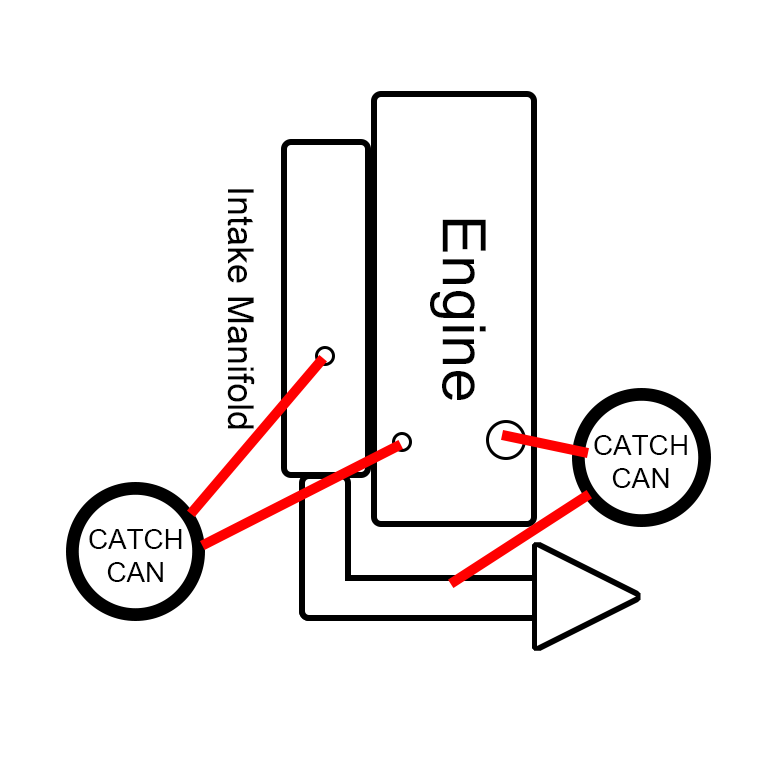
This is what we recommend, the dual catch can system. We believe that this is the best-case scenario that enables the PCV valve to do it’s job in regulating airflow, the PCV-side catch can to capture oil being evacuated by the manifold vacuum, and allows the breather side to work properly to ensure proper airflow into and out of the crankcase. You may connect the breather-side catch can either to the intake tube or vent-to-atmosphere if regulations allow.
The downsides to this setup are that space may be a concern in tight engine bays as having two catch cans and the plumbing running around the engine bay might make fitting them a concern, but we believe this is well worth the trouble to ensure peak performance and reliability.
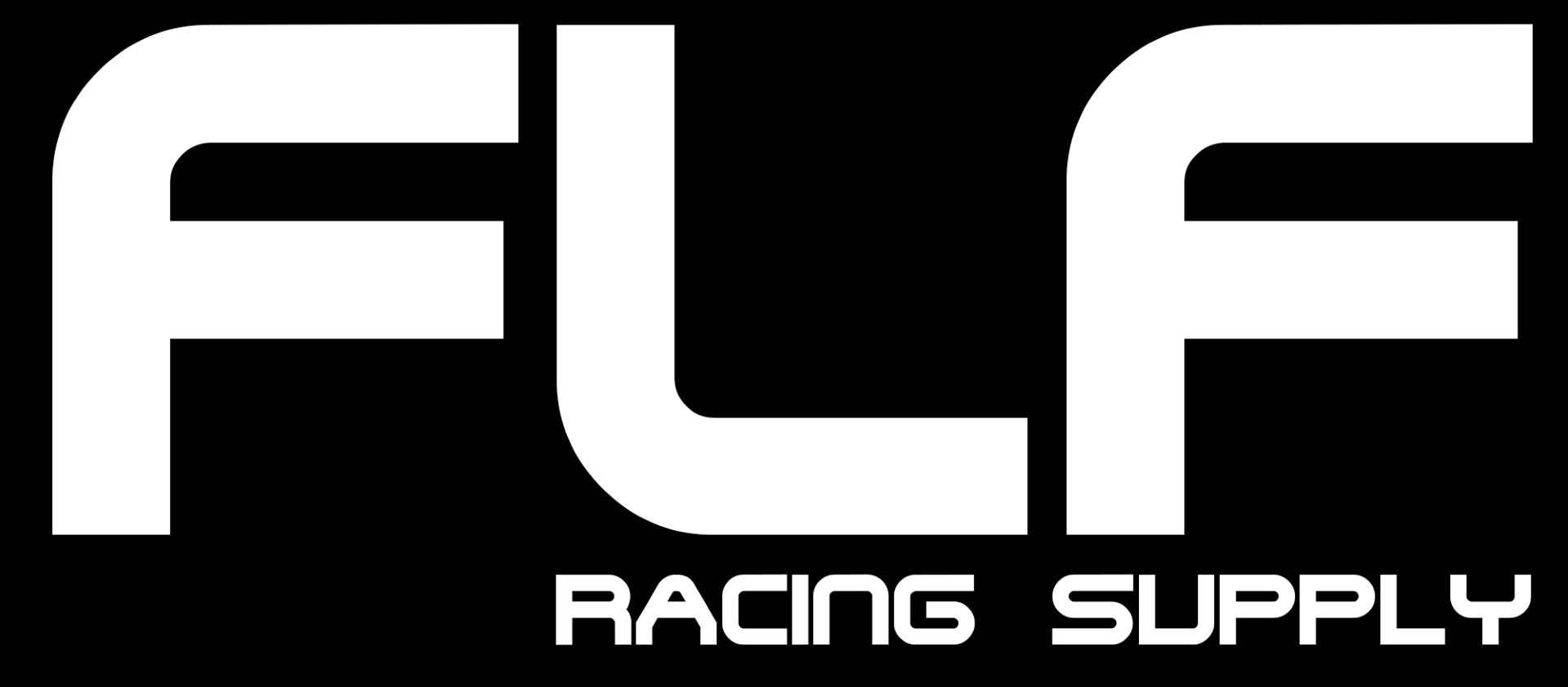
This explained it much better then others thank you. My husband had a LSA Motor put in his truck with a super charger and oil catch can,but the guy who put it in is an idiot and only hooked up one hose to the intake manifold and capped the return line. He told us we have to drain the catch can everythine we drive the truck… I was like that’s taking oil out of the motor and not replacing it, that’s not good the truck needs it’s oil… So I’m trying to figure out where the return line needs to go. So I have a question, if you only had one catch can which set up would you recommend: the PCV port and intake manifold, or the Intake manifold port blocked off, PCV and/or breather ports connected to catch can? I don’t know if he blocked the ports or not. If we can fit and run two we will, but for now I just want the one we have hooked up right. Thank You for your post and any information you provide.